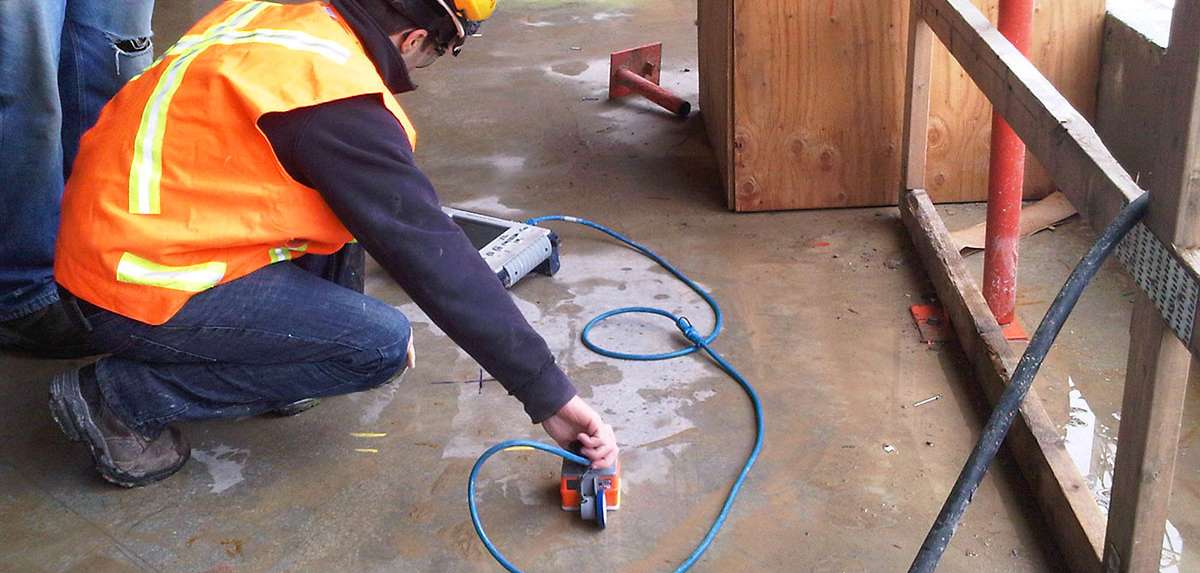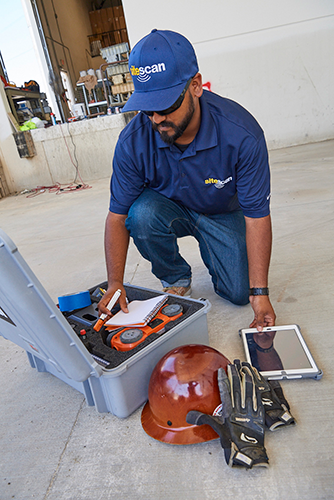Past the Surface: Leveraging Advanced Concrete Scanning Techniques for Unmatched Precision and Understanding
Advanced concrete scanning techniques have arised as vital tools in this search, providing a glance below the surface area to reveal a globe of essential understandings. By harnessing innovative modern technologies, professionals can reveal anomalies, analyze the condition of concrete structures, and make educated decisions that form the training course of projects.
Relevance of Advanced Concrete Scanning
The significance of using sophisticated concrete scanning strategies depends on the exceptional accuracy they offer for discovering sub-surface abnormalities and ensuring structural stability. By utilizing sophisticated technologies such as ground-penetrating radar (GPR), electromagnetic induction, and advanced sonar imaging, construction professionals can delve below the surface of concrete structures with a level of accuracy that far exceeds conventional evaluation techniques. Concrete Scanning. These techniques enable the identification of covert dangers like rebar rust, spaces, channels, or post-tension cables that could compromise the security and safety and security of a structure over time
In addition, progressed concrete scanning gives important insights into the total condition of a concrete element without the demand for intrusive measures, minimizing the threat of triggering damage throughout the evaluation procedure. The capability to pinpoint the specific location and deepness of prospective issues enables targeted repair work and upkeep, eventually prolonging the life-span of the structure and maximizing its performance. In essence, the value of advanced concrete scanning can not be overemphasized in the realm of construction and framework maintenance, where accuracy and dependability are paramount.
Kinds Of Cutting-Edge Technologies

Abnormalities and Problem Discovery

Along with GPR, concrete scanning strategies like thermography and impact-echo screening are additionally reliable in spotting defects and anomalies. Thermography utilizes infrared technology to identify variants in surface area temperature level, suggesting prospective areas of issue such as delamination or wetness ingress. On the other hand, impact-echo testing involves analyzing acoustic responses to detect voids, cracks, and other defects within the concrete. By leveraging these innovative techniques, experts can visit site proactively resolve structural concerns, making certain the longevity and safety of concrete frameworks.
Assessing Concrete Condition
Exactly how can designers accurately examine the problem of concrete structures to guarantee their longevity and security? Numerous advanced concrete scanning methods are utilized for this objective. Ground-penetrating radar (GPR) is commonly utilized to analyze the interior framework of concrete, spotting spaces, splits, and other abnormalities that might endanger its strength.
Additionally, aesthetic inspection remains an essential part of concrete condition evaluation. Engineers aesthetically check out the surface area for signs of wear and tear, such as spalling, splitting, or discoloration. Integrating non-destructive screening techniques with visual assessments enables a detailed examination of concrete problem, enabling designers to recognize possible concerns beforehand and implement timely maintenance or repairs. By leveraging these advanced strategies, designers can make sure the long-lasting durability and safety of concrete frameworks.
Enhancing Decision-Making Procedures
In the realm of framework management, maximizing decision-making processes is vital for ensuring the reliable maintenance and long life of concrete structures. Boosted decision-making processes in concrete monitoring involve making use of advanced scanning strategies to gather in-depth data on the problem of frameworks. By leveraging innovations such as ground-penetrating radar and 3D imaging, stakeholders can make enlightened decisions pertaining to support, substitute, or repair work strategies.
These advanced scanning strategies provide vital insights into the interior make-up of concrete, identifying potential concerns such as spaces, splits, or rust that might not show up externally. This degree of thorough information enables aggressive upkeep planning, reducing the threat of structural failures and boosting the total life-span of concrete frameworks.
Furthermore, by integrating digital paperwork and analysis tools into the decision-making process, stakeholders can track the development of concrete conditions in time, allowing predictive maintenance strategies and optimizing source appropriation. Inevitably, the combination of sophisticated concrete scanning methods improves decision-making processes by providing unmatched precision, understanding, and effectiveness in facilities management.
Conclusion
Finally, progressed concrete scanning strategies supply unmatched precision and insight in discovering anomalies, defects, and evaluating the condition of concrete structures. By leveraging innovative innovations, decision-making processes can be visit our website improved, leading to more effective and educated options for maintaining and repairing concrete framework. These strategies play a crucial duty in guaranteeing the safety and durability of concrete frameworks, making them a crucial tool in the area of construction and design.
Furthermore, progressed concrete scanning provides very useful insights right into the overall problem of a concrete component without the requirement for intrusive measures, lessening the risk of triggering damages during the evaluation procedure - Concrete Scanning. Another ingenious modern technology is 3D X-ray scanning, which offers thorough images of the inner structure of concrete, using beneficial information without the requirement for harmful screening. Furthermore, Concrete Cover Meters are used to measure the thickness of concrete cover over support bars properly. Enhanced decision-making processes in concrete administration entail making use of advanced scanning methods to gather in-depth information on the problem of structures.In conclusion, advanced concrete scanning methods supply unrivaled precision and understanding in detecting anomalies, problems, and examining the problem of concrete frameworks